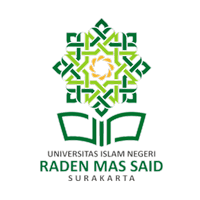Religious-Ecological Values in the Tidung Tale "Ketupat Imbiuku" from Let's Read
Contributors
Jiphie Gilia Indriyani
Novia Adibatus Shofah
Moh. Atikurrahman
Shabrina An Adzhani
Keywords
Proceeding
Track
General Track
License
Copyright (c) 2025 Said Annual Roundtable on Indonesia and Religious Affairs

This work is licensed under a Creative Commons Attribution-ShareAlike 4.0 International License.
Abstract
This study examines the children’s story Ketupat Imbiuku, which is rooted in the Tidung community’s local tradition of tolak bala, a ritual to ward off misfortune, and analyzes how it conveys religious-ecological values and moral education. Drawing on frameworks from children’s literature studies, religious ecology, and postcolonial ecocriticism, the study explores how the narrative uses ritual, symbolism, and child characters to introduce sustainable values through storytelling. The narrative setting in coastal landscapes, the use of natural materials such as nipah and perepat, and the prohibition against choosing one’s own rice cake illustrate the interconnection between spiritual practices and ecological ethics. Through the character of Sinan, children are introduced to empathy, responsibility, and the significance of collective wellbeing. Importantly, Ketupat Imbiuku is distributed through Let’s Read, a digital literacy platform that provides open-access children’s books across Asia. As a digital children’s literature initiative, Let’s Read enhances accessibility to culturally rooted stories and demonstrates the potential of digital storytelling in supporting localized and inclusive environmental education. The analysis reveals that Ketupat Imbiuku exemplifies a form of eco-spiritual pedagogy that aligns with the Sustainable Development Goals (SDGs), particularly in quality education, climate action, and cultural sustainability. The study concludes that localized digital children’s literature holds transformative potential for cultivating moral and environmental consciousness from an early age, especially when grounded in Indigenous wisdom and cultural practices.
